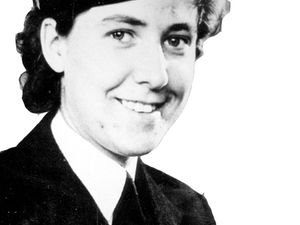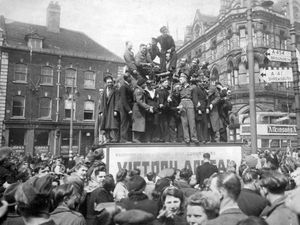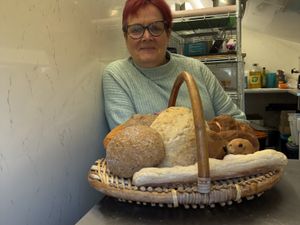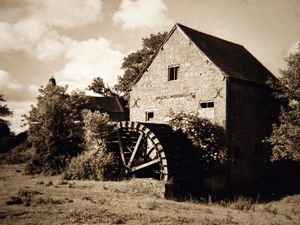GALLERY: How Black Country and Staffordshire celebrated VE Day in 1945
As the news came through, people took to the streets to celebrate.
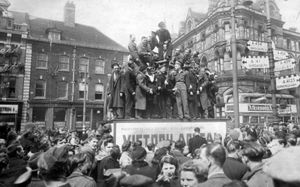
VE Day, May 8, 1945 – a day to go down in history. At last, the long and bloody war in Europe was over, and Hitler and the Nazis were defeated.
There was an immediate and spontaneous outpouring of joy and relief, with rain on the day doing nothing to dampen the spirit of thankfulness.
Victory Vs and photographs of Winston Churchill figured prominently among the flags, streamers and bunting with which streets and shops were decorated. Effigies of Hitler were burned on bonfires.
And in several towns across the West Midlands hundreds of people who went to work as normal found that their places of employment had closed.
Full coverage:
In Queen Square, Wolverhampton, a vast crowd gathered in the afternoon, and the statue of Prince Albert was a popular vantage point for some merrymakers who clambered on top of him and his horse.
With heartfelt prayers being answered, there were church services across the region, a cross was erected on the tower of St Peter's Church in Wolverhampton, and the church and town hall were floodlit for several days.
Flags were already appearing on May 7, and here is a sample of how various towns celebrated VE Day, as reported in the Express & Star on Tuesday, May 8, 1945, which carried a front page picture of an effigy of Hitler which bore the slogan "Heil Hitler. Burn the brute" which was being burned that night on a bonfire in Sutherland Place, Wolverhampton.
Stourbridge: "The mayor (Councillor A.S. Leather) will address the people from the balcony in front of the town hall this evening, and immediately afterwards these proceedings will be repeated at Lye.
"The public buildings and the entrance to Mary Stevens Park will be floodlit and there will be bonfires at Wollescote Park and other places."
Oakengates: "Huge bonfires on the high countryside burned until the early hours of today."
Newport: "There will be a bonfire in the much-beflagged market square. A dance orchestra will play for dancing in the square from an outside balcony at the Vine Vaults. There will be thanksgiving services at all the churches..."
Among the flags flown in Newport were the Soviet banner with sickle and hammer, and even a flag from neutral Eire. The highest was a Union Jack flown from a mammoth 100 foot crane at Ashworth's timber yard.
Wellington: "News of Germany's unconditional surrender was received calmly. There was hearty cheering and some singing from soldiers and service women each time the radio spoke glad tidings.
"Yet when the hostelries closed and the hand-shaking, cheering throngs deployed into the streets the evidences that any had celebrated not too wisely but too well, were negligible... Flags and bunting began to appear on the faces of the buildings and across the narrow streets late yesterday afternoon...
"Today more victory flags have been hung out and the town has a gay festive appearance. One of the most novel and humorous features of New Street's decorations is a line of washing including a red and blue skirt, stretched between the building with the emblem 'We'VE hung out the washing on the Siegfried line.'
"Owing to certain technical difficulties the gigantic electric V-sign which it was proposed should be placed on the Wrekin will not now be erected, but it is hoped the sign will figure in Wellington's third day celebrations on a date to be fixed."
Even amid the celebrations, there was tragedy. William George Crockett, aged 50, of Alexandra Road, Tipton, fell to his death as he helped to put up a flagpole in Jubilee Park, Tipton, on VE Day. He had climbed the pole to remove a rope and appeared to lose his balance.
And Albrighton-born Robert Dutton Williams, the secretary of the Birmingham Post and Mail, collapsed and died in Birmingham's victory parade on May 13.
More happily, the bells of victory started ringing from St Peter's Church, Kinver, as Miss C.A.E. Handy of High Street, Kinver, and Royal Navy Signalman J.R.C. Nuth, of Dunkley Street, Wolverhampton, were married inside on the afternoon of VE Day.
The days after VE Day were to see locally organised events and street parties, including church services and parades the following Sunday. For instance, in Bridgnorth, about 1,200 were in St Leonard's Church, a congregation said to have only been bettered by the memorial service for King George V.
The parties were not, of course, necessarily held outdoors in the street. For instance, there was a victory party on May 14 for the children of Pope Road at The Scotlands, Wolverhampton, which was held in an air raid shelter – specifically the surface shelter in Masefield Road churchyard.
A major event held in Wolverhampton was an outdoor thanksgiving service which took place at the Molineux football ground on Sunday, May 13.
About 4,000 people from the various services were on parade, while there were around 10,000 spectators in the stands.
Molineux was decorated with bunting and flags from 17 nations – eight on each side of a Union Jack lined one side of the ground, there was a picture of the King underneath the clock, and a large "V" on the Molineux stand.
It was, said Wolverhampton's Mayor Councillor T.W. Phillipson, probably the most impressive event held there.
For 45 minutes Sankey's Hadley Castle Band played and there was community singing led by the choral section of Wolverhampton Guild of Music. Then followed the entry of the procession of detachments from the fighting and civil defence services, Home Guard workers, and public and youth organisations, who lined up facing the main stand.
There was the national anthem, a drumhead service of thanksgiving conducted by the Lord Bishop of Lichfield, Dr E.S. Woods, and the Last Post was sounded, followed by two minutes' silence.
A few days later, in the evening of Thursday, May 17, there was another event at Molineux, this time featuring a large number of Wolverhampton schoolchildren in a "schools service of thanksgiving, remembrance, and resolve."
The Express & Star reported: "The impressive parade was watched by over 8,000 people who saw the children line up, their school colours making a contrast as they stood smartly in lines."
Elsewhere the Victory Shop at Beatties in Wolverhampton, which over two years had raised over £11,000 for the Red Cross and St John Fund, was closing down, with all stocks being sold at half price to clear.
Rounding up just some of the other celebrations, on Thursday, May 10, 1945, the Express and Star reported there had been bonfires and street parties in most West Midland towns and districts, on both the Tuesday and Wednesday, the victory celebration days.
"At Cannock there was a huge bonfire in the Market Square. Hednesford crowds danced in the streets till the early hours of yesterday. Tipton celebrations will continue during the weekend.
"Shrewsbury – Carefully hoarded fireworks were set off along the river bank, and in the Square, where there was dancing. Bonfires blazed on the banks of the Severn and one of the town's principal breweries gave away beer, with lemonade for the children.
"Much amusement was caused by the sight of a Salopian riding a penny farthing bicycle through the crowded streets. The local barracks held a free dance for all ranks, and on Tuesday afternoon there were sports on the playing fields.
"Strings of red, white and blue fairy lights were hung from many buildings. Effigies of Hitler were burned in many of the bonfires...
"Donnington – A big crowd gathered at the bus round-about singing and dancing until after midnight. A huge bonfire was started...
"Dawley – Sounds of revelry could still be heard in the early hours of Wednesday morning.
"Oakengates – Over 2,000 people were present on St George's recreation ground yesterday, where a sports programme was arranged by the Lilleshall Company's Social Committee and the Miners' Pit Production Committee. Miss A. Jones was crowned Victory Queen.
"Wellington – A vast crowd in the Market Square overflowed into neighbouring streets. In one road 40 families clubbed together for a bonfire, at which an effigy of Hitler was burned. There were fairy lamp displays, floodlights and dancing till 2am. The New Hall YMCA canteen at Wellington provided 1,500 service people with free meals, drinks, and cigarettes.
"Kinver – There was a united service on Wells' field, where about 300 parishioners assembled. Later about 500 people assembled on Kinver Edge, where a bonfire had been made by the Boy Scouts."

